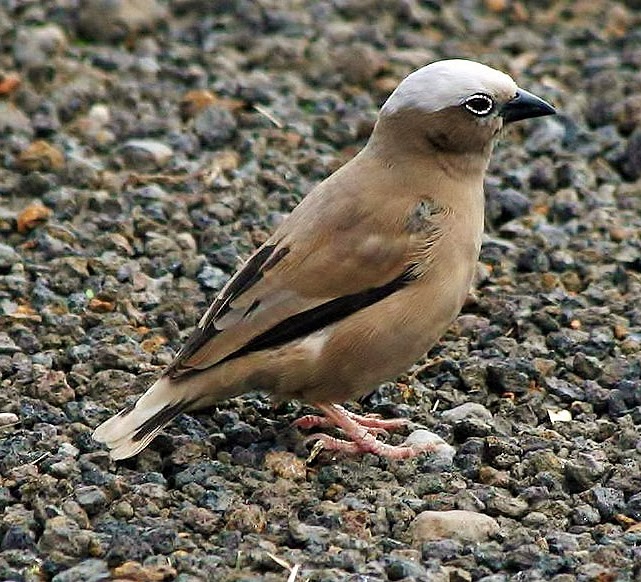 |
| Photo by Dick Daniels (Wikipedia) |
Common name:
grey-capped social-weaver (en); tecelão-de-barrete-cinzento (pt); républicain d’Arnaud (fr); tejedor social de Arnaud (es); marmorspätzling (de)
Taxonomy:
Order Passeriformes
Family Ploceidae
Range:
This African species is found from southern Sudan and southern Ethiopia, through eastern Uganda, Kenya and southern Somalia, and into Tanzania.
Size:
These birds are 10-12 cm long and weigh 18-20 g.
Habitat:
The grey-capped social-weaver is found in dry savannas and dry tropical scrublands, from sea level up to an altitude of 1.400 m.
Diet:
They feed on grass seeds and insects such as grasshoppers, beetles, termites and caterpillars.
Breeding:These birds can breed all year round, but especially during the local rainy season. They nest in dense colonies, sometimes with over 100 nests in a single tree, each nest consisting of a large spherical structure with two entrances on the bottom, It is made of grass blades and lined with finer grasses. The female lays 2-3 eggs which are incubated by both parents for about 14 days. The chicks are fed by both parents and often also by helpers and fledge about 20 days after hatching.
Conservation:IUCN status – LC (Least Concern)
This species has a large breeding range and is described as uncommon to locally common. The population is suspected to be stable in the absence of evidence for any declines or substantial threats.







